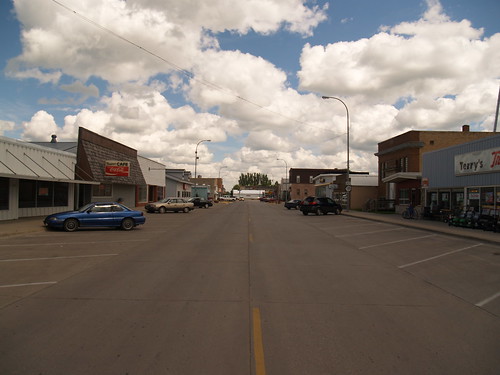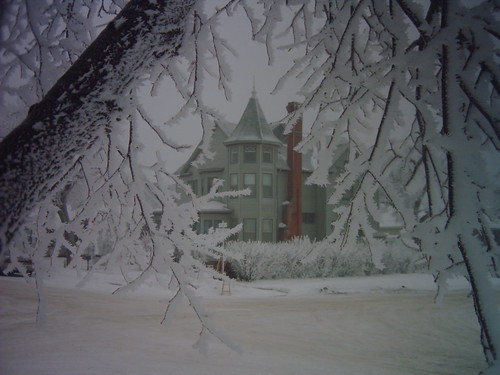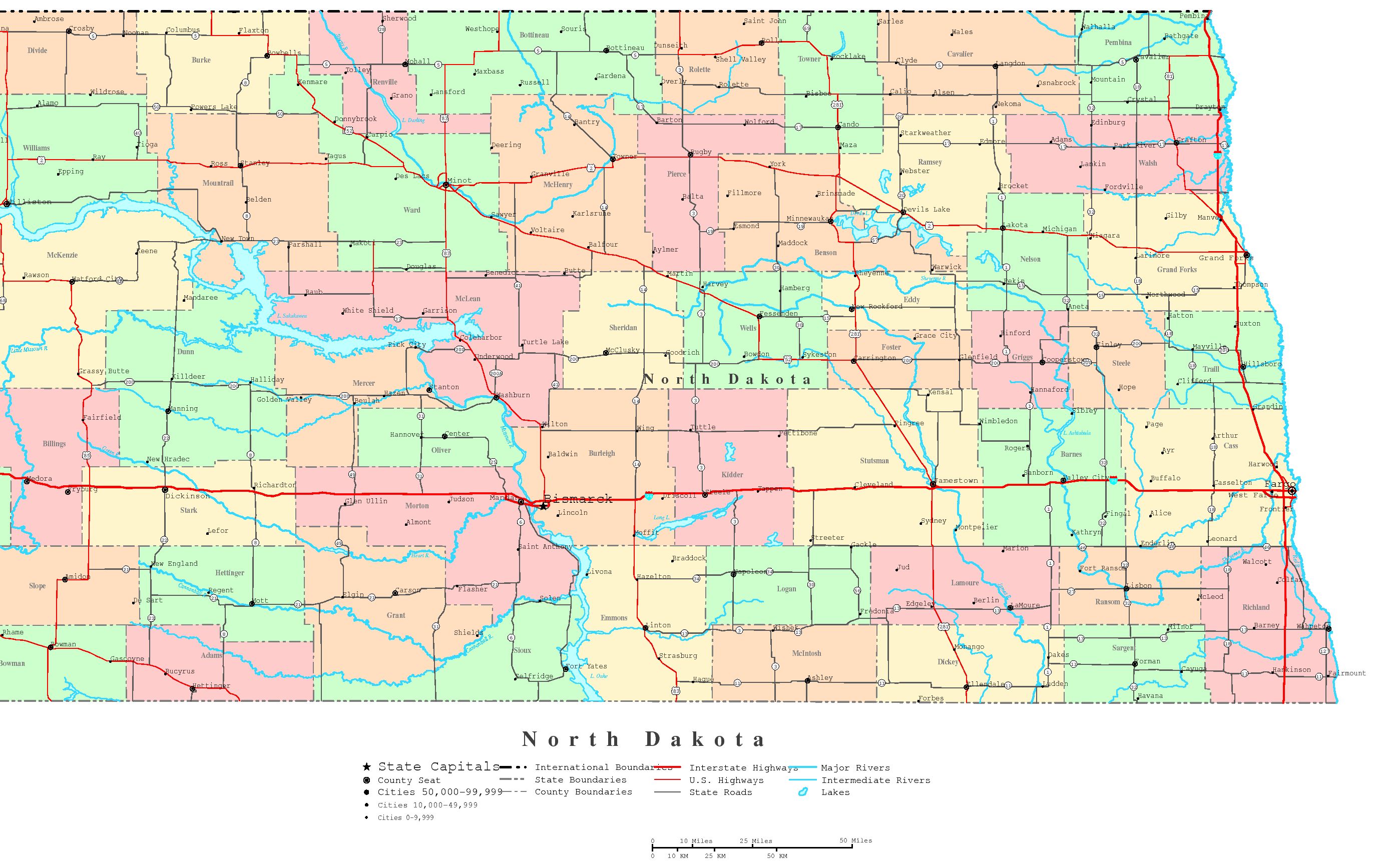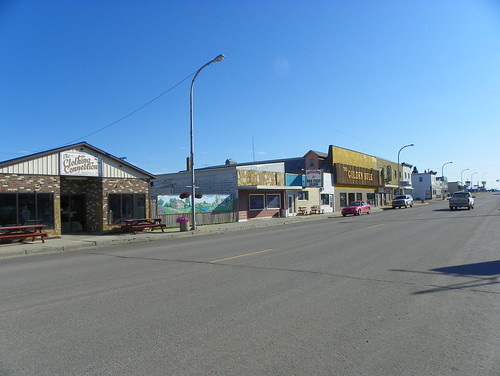Blue Highways: Grand Forks, North Dakota
Unfolding the Map
 At Grand Forks, we say goodbye to North Dakota and look toward Minnesota ahead. I passed by Grand Forks once. While William Least Heat-Moon (LHM) gets his water pump fixed, I'll use this opportunity to reminisce about how the city seems to herald civilization at the edge of the Great Plains. To see where Grand Forks does its duty, head to the map!
At Grand Forks, we say goodbye to North Dakota and look toward Minnesota ahead. I passed by Grand Forks once. While William Least Heat-Moon (LHM) gets his water pump fixed, I'll use this opportunity to reminisce about how the city seems to herald civilization at the edge of the Great Plains. To see where Grand Forks does its duty, head to the map!
Book Quote
"Who in America would guess that Grand Forks, North Dakota, was a good place to be stuck in with a bad water pump? Skyscrapers from the thirties, clean as a Norwegian kitchen, a state university with brick, big trees, and ivy. On Monday morning the pump got replaced in an hour for $37.50. I had expected to be taken for three times that figure, but I met only honest people."
Blue Highways: Part 7, Chapter 10
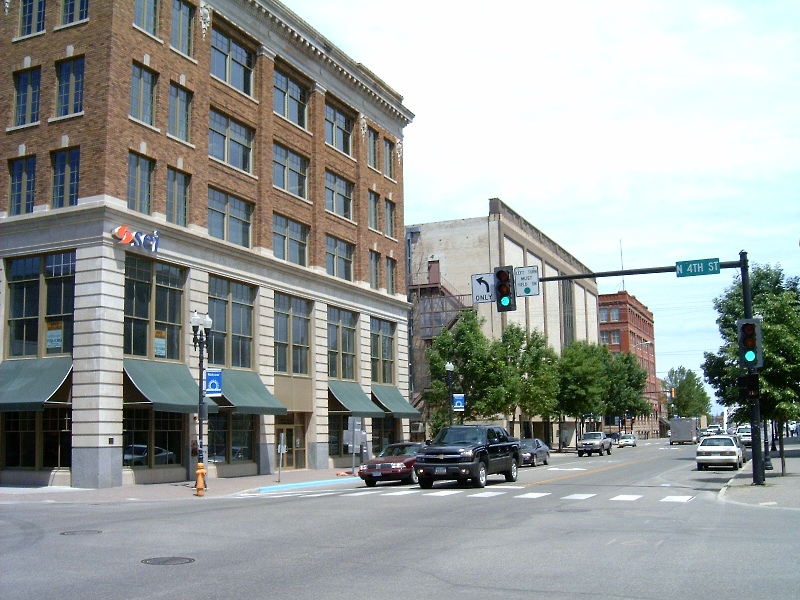 Downtown Grand Forks, North Dakota. Photo by David Stybr and hosted at City-Data. Click on photo to go to host page.
Downtown Grand Forks, North Dakota. Photo by David Stybr and hosted at City-Data. Click on photo to go to host page.
Grand Forks, North Dakota
I remember Grand Forks vaguely, kind of like a dream that appeared in the midst of the flat farmland of North Dakota as we (my fiancee and I) made our long drive from Dunseith, North Dakota to Milwaukee, Wisconsin. The city just seemed to pop up out of nowhere, and the large buildings that LHM describes, the "skyscrapers from the thirties" stood out in stark contrast to anything else that we had seen up to that point.
To me, just as St. Louis once signaled the end of civilization and the beginning of the frontier, as memorialized in its massive and spectacular Gateway Arch, Grand Forks seems to signal for travelers passing toward the east the onrush of civilization again from the sparse emptiness of the West. First Grand Forks, modest in size and scale but seemingly gigantic after a thousand miles of prairie and farmland. Then Minneapolis/St. Paul, the twin cities, positively cosmopolitan on opposite sides of the Mississippi River, one seemingly frozen in time with older architecture, the other with sleek, modern, glassy buildings reflecting the sunlight from a distance. Then Chicago, which veneers a rough, wintery, no-nonsense type of grit with its own combination of past and present architecture.
But Grand Forks comes as an initial shock to the senses. It almost seems, after all the miles and all the flatness and the sparseness of North Dakota, like it shouldn't be there. It's buildings shimmer in the hazy distance like a mirage that you expect to disappear until you are right upon it and discover that indeed, it is there. It has sprung, like a flower (or a weed depending on your perspective and your like or dislike of civilization), and persists despite the blazing summers and the freezing, blizzardy winters. It persists despite the devastating floods along the Red River of the North that occurred in 1997, inundating the downtown and neighborhoods and causing the destruction of many buildings and the displacement of many people.
LHM refers to the hardiness and toughness of the people when he makes a reference to "Norwegian." With typical midwestern and old world industriousness, the people of Grand Forks cleaned up after the floods. They demolished some old neighborhoods to put in a levee system, and made a riverfront park to buffer and secure the city from future flooding. In other words, nature gave Grand Forks its best shot, and staggered it, but the flower continues to sprout on the Great Plains, welcoming people back from the hinterlands to civilization.
Yes, I remember Grand Forks, which after a long drive through North Dakota, past flat farmland punctuated by occasional trees and missile silos, seems to sit as a beacon on the plains. I was grateful to Grand Forks for providing something besides the occasional water tower to arrest my sight. I wish that I had time to stop there and visit and experience the "honest people" that LHM mentions. Perhaps one day I'll get to all the places I want or feel that I should have seen.
Musical Interlude
I've been waiting to use this song, and now that we're moving out of Grand Forks and North Dakota, I have to use it. Lyle Lovett's North Dakota is a winsome and melancholy song, juxtaposing the loneliness along borders, and the search for and loss of love.
If you want to know more about Grand Forks
The City Beat (blog)
City of Grand Forks
Dakota Student (student newspaper of University of North Dakota)
Grand Forks Convention and Visitors Bureau
Grand Forks Herald (newspaper)
Grand Forks Life (blog)
High Plains Reader (alternative newspaper)
Travel North Dakota (blog)
University of North Dakota
Wikipedia: Grand Forks
Next up: Oslo, Minnesota




 Monday, January 30, 2012 at 6:42PM
Monday, January 30, 2012 at 6:42PM
